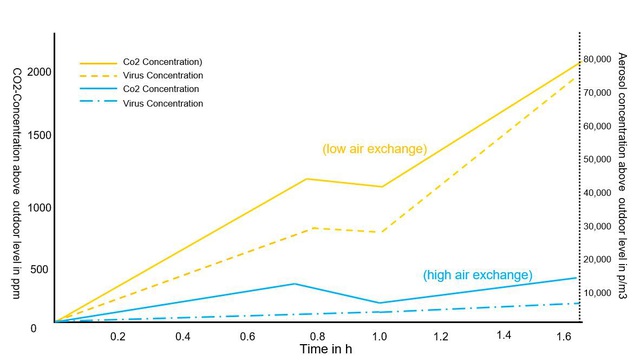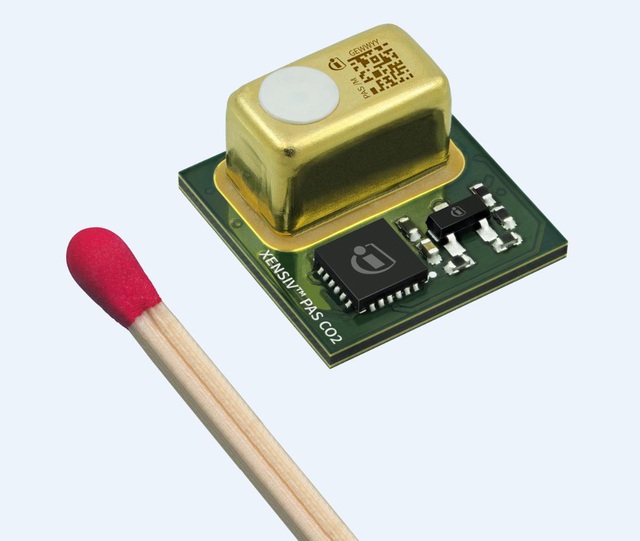What does indoor air quality monitoring mean in the fight against COVID-19?
- Tram Ho
In today’s modern society, people are spending most of their time every day in enclosed spaces where the air quality is usually 2 to 5 times worse than outdoors. In an enclosed environment, carbon dioxide gas becomes toxic to humans at a concentration of 2.5 vol%, but our ability to work, focus and health deteriorates as soon as the concentration is as low as 0, 1 vol% (1,000 ppm). Therefore, installing CO2 meters in enclosed spaces and many people such as office buildings, schools, hospitals, gyms … can completely become a viable solution in hazard monitoring. muscle infection in buildings. The simple devices will emit an alarm signal when the specified CO2 threshold is exceeded. The concentration of CO2 in the air is correlated with the aerosol (aerosol) we exhale, which the aerosol particles in the carriers will contain the SARS-CoV-2 virus. Such alarm systems are therefore a useful and rapidly deployable tool in an effort to combat Covid translation.

CO2 concentration measurements provide useful indicators of Covid-19 risk of infection as this ratio correlates with the aerosol content in the air.
Currently, NDIR (non-dispersion infrared) sensors are being widely applied in the automation systems of smart buildings to control air quality. Although the CO2 concentration can be measured quite accurately, NDIR’s complicated design makes the device more expensive and large in size, unable to be easily integrated into small-sized IoTs or common home appliances. intelligence. Another option is the eCO2 sensor, but unlike the NDIR sensor, it does not measure directly but uses algorithms to calculate a relative CO2 value. As such, the eCO2 sensors provide only approximate values.
So how can people access accurate and cost-effective CO2 measurement features? This challenge prompted Infineon to develop a reliable sensor based on an entirely new technology. Applying the experience and achievements in MEMS microphone technology, Infineon has successfully crafted a CO2 sensor based on Photo-acoustic spectroscopy (PAS) that helps to shrink the CO2 sensor while maintaining accurate and reliable data reading feature. Infineon’s sensors, through many tests, have been proven to be able to accurately measure CO2 concentrations and thanks to the advantage of size, they can be easily integrated into IoT devices for the needs of today’s life. great.

The size superiority of XENSIV ™ PAS CO2 sensors is evident when compared to matchstick size.
The new generation of advanced sensors, such as Infineon’s XENSIV ™ PAS CO2, is expected to be effective in controlling ventilation systems in public buildings such as schools, offices, shopping centers or Gyms … help optimize air quality to protect everyone’s health. In addition, the ventilation system when properly controlled and operated will create smart buildings that are more energy-saving and environmentally friendly.
The sensing system not only activates alarms when the air quality in the building reaches a risk level, but the information collected from these sensors is also stored in the cloud to serve research needs and In-depth analysis of the operating history and efficiency of the equipment system in buildings.
For full technical information and application scope of the new XENSIV ™ PAS CO2 sensor, please visit website: https://bit.ly/3xL3ATJ
Source : Genk
